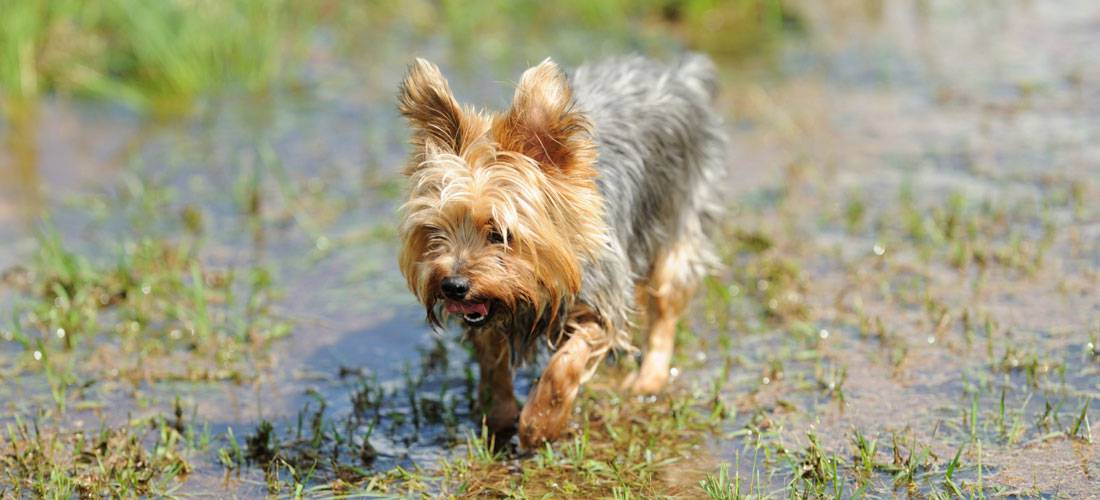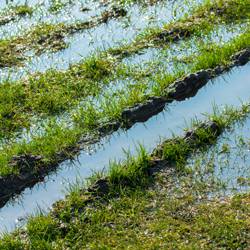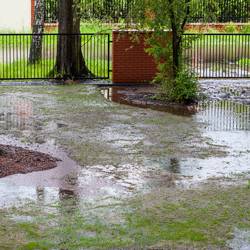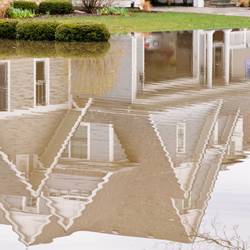Follow these simple tips on how to repair your lawn after flooding and make sure it never happens again!
After a flood, repairing your lawn might not be on the top of your list of urgent matters to attend to. However, it is best to take small steps in rehabilitating it not only to improve the possibility for recovery but for future prevention of another flooded lawn.

Though it may not yet be apparent right away, any appearance of soil lost, scattered debris, defoliated plants, broken branches, and sediments all across the lawn can do more damage than it seem if you don’t take actions immediately. Worse, if left partially or completely submerged for even just a few days, oxygen depletion is imminent and the plant’s root system will be compromised to quick deterioration.
Water temperature and water depth both plays an important role for determining survival of turf grass. Death is inevitable in less than four days when it is 80 degrees F and higher. Even in lower temperatures, lack of oxygen will still cause the turf to die.
 So, what to do to repair and prevent flooded lawns?
So, what to do to repair and prevent flooded lawns?
1. Rescue the soil
Your lawn’s soil composition may have been severely altered due to bacteria and chemicals carried by floodwaters. Have a professional from the USDA field office or your local state university extension to conduct a soil test to assess the damage it incurred. They can even correctly identify and make recommendations if there are specific plant diseases that have spread across the lawn after the flood. In the meantime, you can help the struggling roots to get air and sunlight by aerating the soil.
2. Prevent soil compaction and erosion
 Get rid of large debris such as branches, glass, metal, stones, etc. that could interfere with the restoration of the lawn to its original form. Remove as much silt as possible that will easily crust over and prevent air movement. However, if there are low spots in the area, add quality topsoil (at least 4 inches) to restore its original thickness. Waterlogged soil is prone to compaction so minimize foot traffic. Wear proper attire – long sleeved shirt and strong gloves – to avoid cuts, scratches and even tetanus.
Get rid of large debris such as branches, glass, metal, stones, etc. that could interfere with the restoration of the lawn to its original form. Remove as much silt as possible that will easily crust over and prevent air movement. However, if there are low spots in the area, add quality topsoil (at least 4 inches) to restore its original thickness. Waterlogged soil is prone to compaction so minimize foot traffic. Wear proper attire – long sleeved shirt and strong gloves – to avoid cuts, scratches and even tetanus.
As for organic debris, use a steel rake to spread evenly across the grass surface. This will serve as a useful layer of topsoil (make sure it’s at least 4 inches) and will also cover any exposed plant roots. Be careful not to drag the rake too deeply to avoid further damage to the underlying turf.
3. Restore its equilibrium
A complete fertilizer over the lawn is necessary if growth is evident even after flooding. For every 1000 square feet of lawn, at least ½ pound nitrogen is required. Replace essential nutrients such phosphorus and phosphate as well. To correct pH, add sulphur or lime – according to recommendations of your lawn care contractor. If the turf is thin, you can establish a healthy layer of topsoil by laying down an inch or two of clean compost or manure.
4. Repair extensive damage
 A complete renovation of your lawn is a must if much of the grass was killed or there is possibility for its re-growth. First, eliminate all weeds by using a nonselective herbicide containing 2 percent glyphosate. Create a uniform seedbed by tilling the site, evenly incorporating any remaining silt into the soil.
A complete renovation of your lawn is a must if much of the grass was killed or there is possibility for its re-growth. First, eliminate all weeds by using a nonselective herbicide containing 2 percent glyphosate. Create a uniform seedbed by tilling the site, evenly incorporating any remaining silt into the soil.
Putting in a new set of lawn grass will depend on the type and degree of damage brought by flooding. Most heavily damaged lawns are advised to be re-seeded in fall. The best thing to do is mow the lawn on a regular basis and water it deeply to discourage weed growth and re-establish lawn grasses. If flooding is an unavoidable scenario, Kentucky bluegrass is your best choice to ensure highest possibility of survival.













Write a Comment